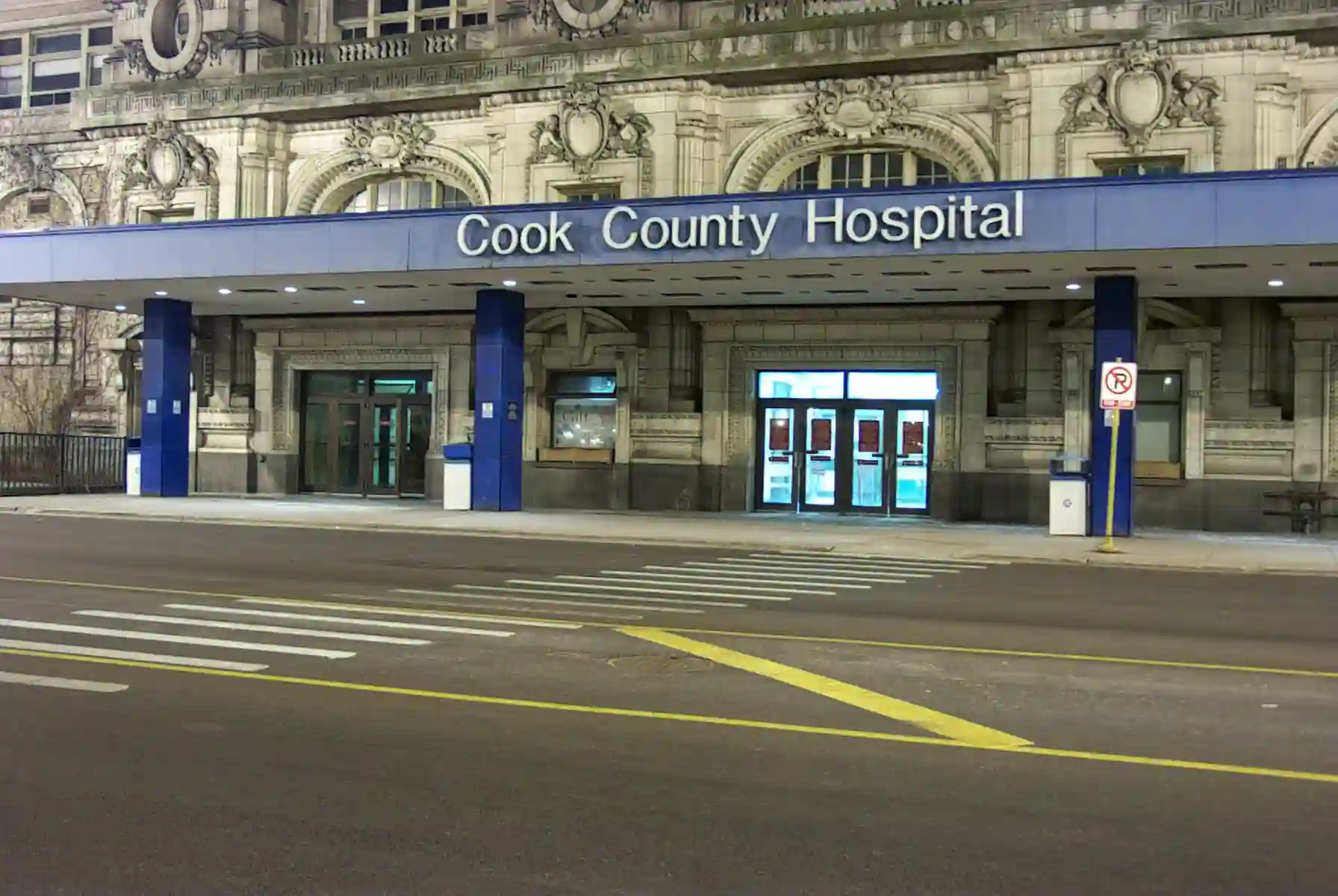If you’ve ever tried to park at a busy hospital in Chicago, you already know—it can feel like a whole adventure in itself. Cook County Hospital parking garage isn’t just a place to leave your car; it’s more like the first test before you even step inside the building.
With patients rushing in for emergency departments, visitors trying to find clinic locations, and staff weaving between shifts, the whole space buzzes with movement. Honestly, it’s easy to get overwhelmed.
And parking garages, let’s be real, come with their own challenges. Limited spaces, confusing signs, that eerie feeling when you end up on a quiet level late at night. Add to that the stress of visiting someone in a Level 1 Trauma Center or rushing into Stroger Hospital for an appointment, and safety can slip to the back of your mind. But maybe it shouldn’t.
Maybe keeping a few habits in check here could make the difference between a smooth visit and one that lingers in your memory for all the wrong reasons.
That’s why I started looking at little hacks—simple, everyday choices—that can make parking here less stressful and more secure. Not miracle fixes, just practical stuff. So, let’s go through them together.
Why Parking Garage Safety at Cook County Hospital Matters
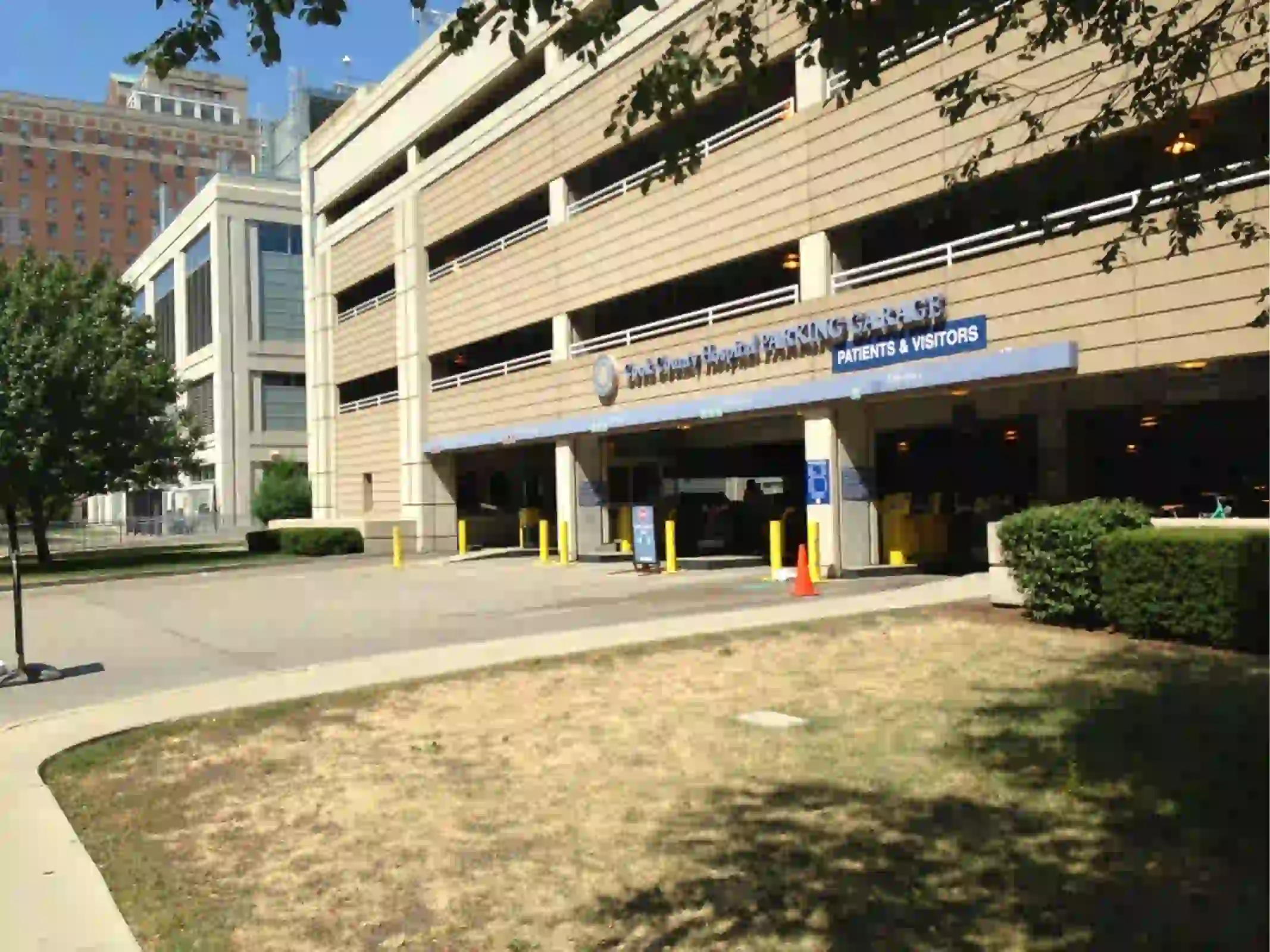
It might sound obvious, but the Cook County Hospital parking garage isn’t just another Chicago lot—it’s the gateway to one of the busiest health systems in the country. Between Stroger Hospital, the University of Illinois Hospital, and clinics like the Eye & Ear Infirmary or Cancer Center, thousands of people come through every single day. And where crowds gather, safety risks follow.
Think about it: cars moving in tight lanes, visitors distracted while checking Google Maps for directions, and patients walking slowly after treatment. Add the fact that many garages—this one included—have multiple levels, with hidden corners and stairwells, and you see why being alert matters. Theft, fender benders, even just tripping in dim light—it’s not dramatic, it’s just reality.
Another layer? The emotional state of people coming here. When you’re worried about a loved one in the Pediatric Emergency Department or running late for an outpatient appointment, your focus isn’t on your surroundings. That makes you more vulnerable. Which is why these safety hacks aren’t just “nice to know.” They’re… well, kind of necessary.
Hack #1 – Choose the Right Parking Spot Early
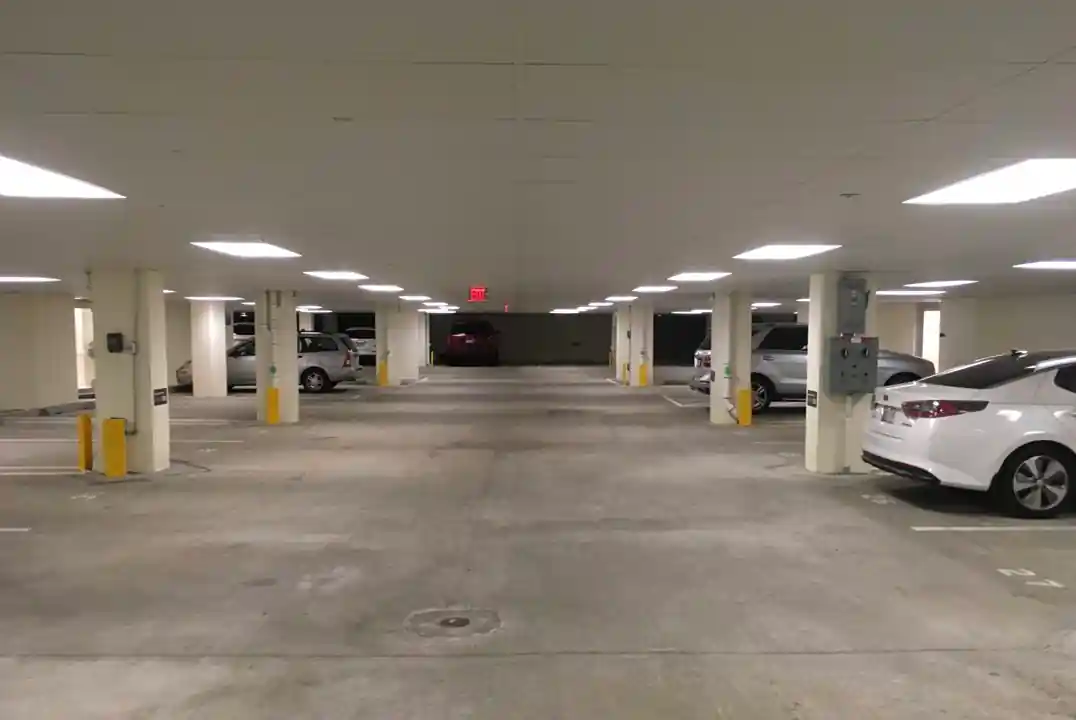
Finding a space isn’t just about convenience—it’s also about setting yourself up for a safer visit. I’ve learned the hard way that those “empty-looking” corners aren’t always the best bet.
Look for Well-Lit Areas
At night especially, light is your friend. A well-lit space makes it easier for security cameras to monitor activity and for you to spot what’s around you. Honestly, even during the day it helps—shadows in underground levels can play tricks on your eyes.
Avoid Isolated Corners
It’s tempting to grab the first empty spot in a far-off section, but isolation can work against you. Spaces closer to elevators, main entrances, or call boxes usually have more foot traffic, which means more safety. Sure, it might add a couple of extra steps, but it’s worth it.
Pro Tip: If you’re visiting during peak times, like morning appointments at Stroger Hospital or Labor and Delivery check-ins, aim for visitor parking areas closest to the main entrances. They fill fast, but early birds usually snag the safest spots.
Hack #2 – Stay Aware of Your Surroundings
It sounds so simple, but in the Cook County Hospital parking garage, awareness is almost everything. The space is big, multi-leveled, and busy—between inpatient units, emergency departments, and outpatient spaces, you’ll see people from all walks of life rushing in and out. Distraction is what usually trips people up.
Limit Phone Distractions
Scrolling through your phone while walking to your car? Honestly, it’s one of the most common mistakes. You miss what’s happening around you—the sound of footsteps, a car reversing, or even someone calling out. Medical emergencies have enough chaos inside the hospital; you don’t want to add a parking garage mishap outside.
Trust Your Instincts
I know it sounds cliché, but if something feels off—like a too-quiet corner or a stranger hovering nearby—listen to that gut feeling. Move toward busier areas, or even head back inside to ask hospital security for help. Cook County Health does have security escorts available, though a lot of visitors don’t realize they can actually ask.
Quick checklist to stay sharp while walking in/out of the garage:
- Keep your keys in hand (not buried in a bag).
- Walk with purpose, not hesitating in dark areas.
- If you hear or see something odd, head for main exits or elevators.
- Use security call boxes if you feel uneasy.
Pro Tip: If you’re visiting after dark, try coordinating with a friend, colleague, or even hospital staff so you’re not heading out alone. A simple “wait for me at the exit” text can make all the difference.
Hack #3 – Secure Your Vehicle Every Time
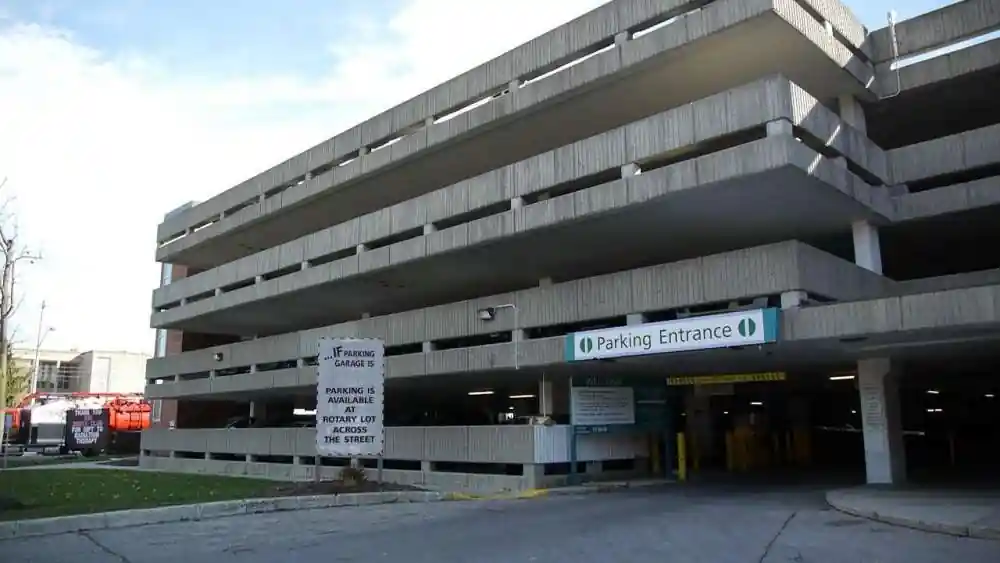
You’d think locking the car is second nature, but you’d be surprised how many people forget—especially when they’re juggling paperwork, health insurance information, or rushing to an appointment. In a high-traffic spot like the Cook County Hospital parking garage Chicago IL 60612, small lapses invite big problems.
Lock All Doors and Windows
Even if you’re only gone for a few minutes—say, picking up medical assistance paperwork or visiting the Occupational Health & Workers’ Compensation Clinic—always lock up. Opportunistic theft happens fast.
Hide Valuables from View
This one feels obvious, but it’s where people slip. A laptop bag, a wallet, or even a jacket tossed on the seat can catch someone’s eye. If you must leave something behind, stash it in the trunk before you arrive at 1800 W Polk St, not after you’ve parked where others might be watching.
Here’s a quick comparison table for clarity:
| Common Mistake | Safer Alternative |
|---|---|
| Leaving windows cracked for air | Use fan coil units or car’s climate control before exiting |
| Tossing bag on the passenger seat | Lock items in trunk before parking |
| Thinking “just five minutes won’t matter” | Always lock up, even short visits |
| Parking in isolated zones with valuables visible | Choose monitored or well-lit sections |
Pro Tip: If you’re worried about car break-ins, consider using mobile payment parking apps like iParkit or Passport. They let you extend your time without returning to your vehicle, reducing the chances of rushing and forgetting to secure things properly.
Hack #4 – Use Hospital Security Features
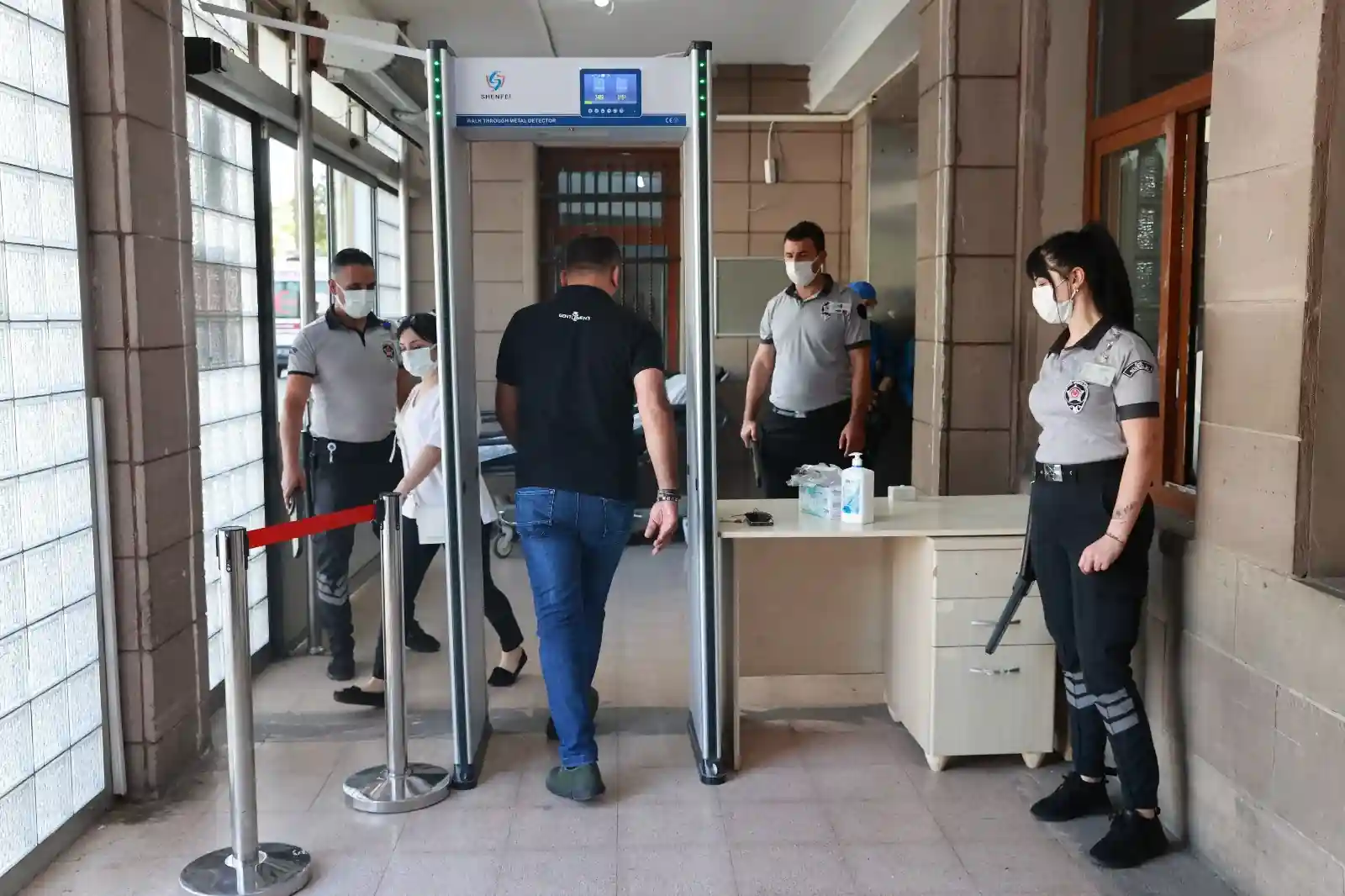
One thing that often gets overlooked: Cook County Hospital parking garage isn’t just concrete and cars. It’s part of a much bigger system. Cook County Health has invested in security features—some obvious, some you have to know about. If you’re visiting John H. Stroger, Jr. Hospital of Cook County or heading to nearby clinic locations like the Millennium Park Eye Center or Sleep Sciences Center, these details really matter.
Look for Cameras and Call Boxes
If you’re circling for a spot, check overhead for visible cameras. Parking near monitored zones means there’s always a digital witness. Same goes for call boxes. They’re not just decoration—they’re lifelines if you suddenly feel unsafe or run into trouble.
Ask for Security Escorts
Here’s something most people don’t realize: Cook County Health offers security escorts for visitors leaving the garage, especially after dark.
Just stop by the Transportation & Parking Office or call through the hospital’s main Cook County Hospital phone number. It may feel awkward to ask, but honestly, that’s what the service is there for.
What security features should you look for?
- Blue-light emergency call boxes
- Visible surveillance cameras
- Posted Masking Guidance & safety rules
- Security patrol vehicles inside and around the garage
Pro Tip: If you’re visiting the Pediatric Emergency Department or rushing into the emergency room for medical emergencies like chest pain or severe pain, don’t hesitate to park near the main entrance—even if rates are slightly higher. Peace of mind is worth more than saving a few dollars on parking fees.
Hack #5 – Keep Track of Your Parking Location
This one sounds almost silly… until you’ve wandered around multiple levels of the Cook County Hospital parking garage after a stressful visit. Between inpatient units, outpatient spaces, and departments like Neurology and Neurosurgery or Digestive Health, you might spend hours inside. By the time you return, your brain is elsewhere.
Snap a Photo of the Level/Section
Instead of trying to memorize “Wood Street Parking Structure, Level 3, Row C,” just grab your phone and take a picture of the nearest sign. That way you’re not wandering when all you want is to go home.
Use Parking Apps or Notes
Mobile apps like iParkit and Passport not only help you pay but also log your parking spot. You can also drop a pin in Google Maps so your phone literally leads you back.
Why does this matter? Because the Cook County Hospital parking garage address (1800 W Polk St) is large and links into connected structures like Campus North Garage or Paulina Street Parking Structure. Confusion is easy.
Here’s a quick list of ways to avoid losing your spot:
- Drop a pin on Google Maps before walking away.
- Text your parking location to yourself.
- Take a photo of the “Max Height” clearance or color-coded section sign.
- Note nearby facilities—like if you’re parked closer to the Cancer Center vs. the Craniofacial Center.
Pro Tip: If you know your visit might run long—like waiting at Labor and Delivery or the Stroke Center—make a habit of noting the time you parked too. Apps like Passport let you extend your session remotely, so you don’t risk a ticket or late fee.
Hack #6 – Travel in Pairs When Possible

There’s something about walking alone in a hospital garage late at night that just doesn’t feel right. The Cook County Hospital parking garage is no different. With multiple structures like the Kimbark South Parking Garage and Wood Street Parking Structure, isolation can sneak up on you—especially after visiting hours wind down.
Bring a Friend or Colleague
If you’re heading in for a late shift at Stroger Hospital or leaving after visiting a patient at Provident Hospital, try to coordinate departures. Even walking together for a short distance boosts safety. Many staff already do this without thinking—especially those finishing night rotations in inpatient units or the Pediatric Emergency Department.
Use Main Exits Together
Avoid stairwells or tucked-away doors. They may look like shortcuts, but they’re often poorly lit and less monitored. Main exits with cameras, foot traffic, or hospital staff presence are safer choices.
Best practices when leaving the Cook County Hospital parking garage at night:
- Text a colleague when you’re leaving so you can walk out together.
- Stick to well-traveled exits, not quiet corners.
- If leaving late, ask security to watch you head out.
- Avoid carrying too many bags—your hands should be free.
Pro Tip: If you’re visiting court-related facilities like the Criminal Courthouse or Court Clerk’s office nearby, plan your return trip with someone else. Even daytime visits can stretch into evening hearings, and walking back with company helps.
Hack #7 – Plan Ahead for Emergencies
Hospitals deal with emergencies every day, but visitors don’t always think about them in the garage. Power outages, medical episodes, even fire alarms—knowing a few basics can take away panic. The Cook County Hospital parking garage Chicago IL 60612 has systems in place, but preparation is still on you.
Save Security Numbers in Your Phone
Before leaving your car, jot down the Cook County Hospital phone number and Transportation & Parking Office contact. If something goes wrong—anything from a fender bender to sudden chest pain—you won’t waste time searching.
Know Exit Routes
Elevators are convenient, but if there’s an outage or fire, you’ll want to know where the stairwells are. Keep in mind the garage has a max height clearance of 7 ft. 0 in. (2.13 meters)—a detail important not just for tall vehicles but also for emergency access.
Here’s a quick emergency readiness table:
| Situation | What To Do |
|---|---|
| Power outage | Use stairwell exits, keep a flashlight app ready |
| Medical emergency (heart attack, severe pain) | Call 911, then use nearest call box/security line |
| Fire alarm | Exit via main routes, avoid elevators |
| Vehicle breakdown | Call Parking Office or use iParkit app support |
Pro Tip: If you’re visiting patients who might need extra support—like those at the Stroke Center, Labor and Delivery, or Digestive Health units—consider keeping a small go-bag in your car with water, a phone charger, and emergency contacts. Parking garages are unpredictable, but being ready makes everything smoother.
Bonus Hack – Consider Alternatives to Parking in the Garage
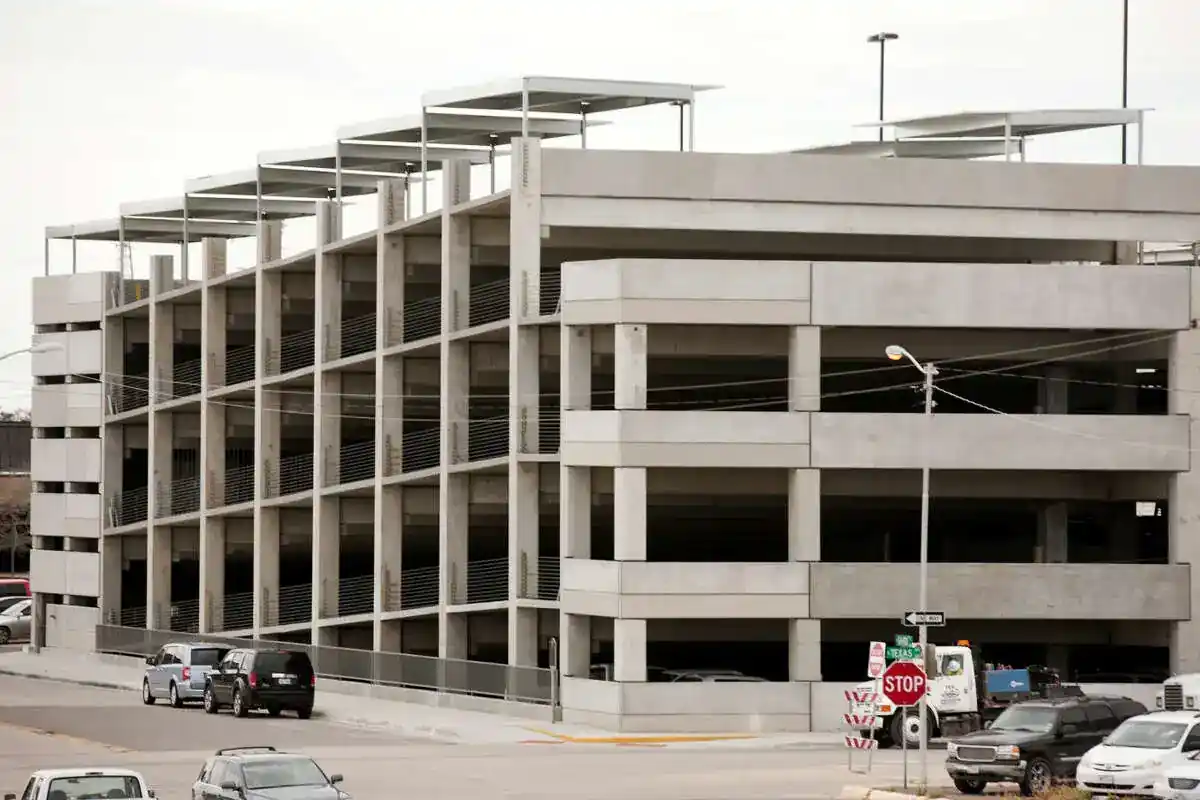
Here’s the thing: you don’t always have to park inside the Cook County Hospital parking garage itself. Depending on when you visit—maybe during peak hours at John H. Stroger Jr. Hospital of Cook County or late evenings at the Eye & Ear Infirmary—sometimes avoiding the garage altogether is the smartest move.
Public Transit Options
Chicago’s CTA makes this easier than people think. The Pink Line Polk Station drops you within walking distance of 1800 W Polk St, and buses run frequently along main roads like East 60th Street and Stony Island Avenue. For some, especially if you’re coming for quick outpatient appointments, this can be more reliable than circling for a spot.
Rideshare or Carpooling
If your visit is at night or you’re heading into busy departments like Labor and Delivery or the Stroke Center, consider carpooling with family. Or just use a rideshare app—no stress about parking garage rates, max height clearance, or remembering your level.
Alternative parking options around Cook County Health:
- University-operated lots near the University of Illinois Hospital
- Campus North Garage for long-term visitors
- Park & Lock services near Paulina Street Parking Structure
- Free parking near Stroger Hospital (rare, but sometimes available in off-peak hours)
Pro Tip: Use mobile apps like the Passport app or iParkit app not just for payment, but also for locating cheaper nearby garages. Some even list current Cook County Hospital parking garage rates so you can compare before committing.
Final Words
At the end of the day, the Cook County Hospital parking garage isn’t just a place to stash your car—it’s the first and last step of your visit. And whether you’re there to see someone in the Cancer Center, running into Occupational Health & Workers’ Compensation Clinic, or meeting a loved one after surgery, those small safety habits matter.
Choose well-lit spots. Stay aware. Lock your car. Use the hospital’s security resources. Keep track of where you parked. Walk in pairs. Plan for emergencies. And yes—sometimes skip the garage altogether. None of these are complicated, but together, they make the whole experience smoother, safer, and a little less stressful.
It’s not about paranoia. It’s about giving yourself peace of mind in a place where your attention should be on your loved ones or your health—not on whether your car is safe. A few habits, a little planning, and suddenly the Cook County Hospital parking garage feels less like a worry and more like just another stop on your day.
People Also Might(Faq’s)
1. How much does it cost to park at the Cook County Hospital parking garage?
Cook County Hospital parking garage rates vary depending on how long you stay. Short-term visitors may pay just a few dollars, while daily maximum rates apply for longer visits. Always check posted signs or the iParkit app for the latest rates.
2. Is there free parking near Stroger Hospital of Cook County?
Yes, though it’s limited. Some visitors find free parking near Stroger Hospital on side streets during off-peak hours. But spots fill quickly. If you’re visiting late at night or during weekends, street parking may be your best option.
3. Where exactly is the Cook County Hospital parking garage located?
The main entrance is at 1800 W Polk Street, next to John H. Stroger Jr. Hospital of Cook County. It’s close to the Cancer Center, Eye & Ear Infirmary, and other Cook County Health facilities.
4. Is overnight parking allowed in the Cook County Hospital garage?
Overnight parking is usually permitted, but rates increase. If you’re staying with a loved one in the hospital, confirm with security or garage staff before leaving your car overnight.
5. What’s the safest place to park in the Cook County Hospital parking structure?
Aim for well-lit areas near elevators or entrances. Avoid isolated levels if possible. Following these parking garage safety tips ensures peace of mind during your visit.
6. Can I use public transportation instead of parking at the hospital?
Absolutely. The CTA Pink Line Polk Station is within walking distance, and buses run regularly on Ashland, Damen, and nearby routes. Many locals skip Cook County Hospital parking garage fees by relying on the CTA.
7. Are there alternatives to the Cook County Hospital garage?
Yes. Options include the Paulina Street Parking Structure, University of Illinois Hospital lots, and nearby private parking services. Some even offer discounted daily passes compared to Cook County Hospital garage rates.
8. Is the garage accessible for people with disabilities?
Yes. The Cook County Hospital parking structure has designated accessible spaces, ramps, and elevator access. Be sure to display a valid disability placard to avoid fines.
9. What should I do if I forget where I parked?
It happens a lot. Note the level and section when you arrive, or snap a quick photo. If you do forget, hospital security can help you locate your car within the garage.
10. Do I need cash for the Cook County Hospital parking garage?
Most of the time, no. Payment kiosks accept credit cards and mobile apps like Passport Parking or iParkit. Still, carrying small bills can help in case of machine issues.

